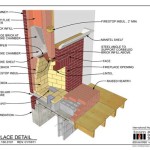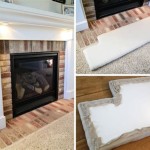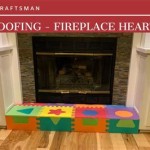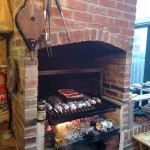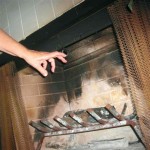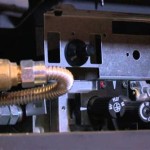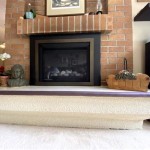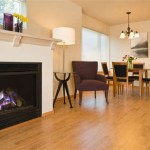Standalone Fireplaces: A Guide to Wood-Burning Ambiance
A standalone fireplace, especially a wood-burning model, can add warmth and ambiance to any room. However, choosing the right one for your needs requires careful consideration. This article explores the features, advantages, and disadvantages of standalone wood-burning fireplaces, offering insights to help you make an informed decision.
Types and Styles
Standalone wood-burning fireplaces come in various types and styles, each with its own unique characteristics.
- Traditional Fireplaces: These classic fireplaces feature a large open hearth and a chimney, offering an authentic and traditional look. They are usually built into the room's structure and can be adorned with decorative elements like a mantelpiece.
- Fireplace Inserts: These appliances are designed to be inserted into existing fireplaces, replacing the traditional firebox. They offer better efficiency and cleaner burning than open fireplaces.
- Free-Standing Stoves: These standalone units are highly efficient and come in various sizes and styles, from traditional cast iron stoves to sleek contemporary options. They can usually be placed anywhere in the room with a suitable flue connection.
The style you choose will depend on your personal preferences, the size of your room, and the overall aesthetic you desire. For example, a traditional fireplace might suit a rustic or farmhouse style, while a modern free-standing stove could complement contemporary décor.
Advantages of Wood-Burning Fireplaces
Wood-burning fireplaces offer several advantages over other heating options.
1. Ambiance and Warmth
The crackling sound of burning wood and the mesmerizing dance of flames create an unmatched atmosphere of warmth and comfort. This traditional heating method can transform a room, creating a cozy and inviting space for relaxation and gatherings.
2. Efficiency and Cost-Effectiveness
Modern wood-burning fireplaces, particularly inserts and stoves, are designed for high efficiency. With proper installation and maintenance, they can provide significant heating benefits and reduce reliance on other heating sources, potentially leading to cost savings.
3. Sustainable and Renewable
Wood is a renewable resource, and using sustainably sourced firewood can contribute to a more environmentally friendly approach to heating. Utilizing local or recycled wood sources can minimize transportation costs and environmental impact.
Disadvantages of Wood-Burning Fireplaces
While wood-burning fireplaces offer numerous benefits, it's essential to be aware of their drawbacks.
1. Maintenance Requirements
Wood-burning fireplaces demand regular maintenance. This includes cleaning the fireplace, chimney, and flue to prevent creosote buildup, which can be a fire hazard. You'll also need to stock and store firewood, ensuring it's properly dried and seasoned.
2. Potential Environmental Concerns
Burning wood releases smoke and particulate matter into the air, which can contribute to air pollution. However, utilizing efficient and properly maintained fireplaces can significantly reduce these emissions. Choosing a model with a certified emission rating and burning dry, seasoned wood can further minimize environmental impact.
3. Fire Safety Considerations
Wood-burning fireplaces pose a fire hazard if not installed and operated correctly. It's crucial to follow manufacturer instructions, ensure proper ventilation, and maintain a safe distance from flammable materials. Regularly checking for creosote buildup and having your chimney inspected annually are essential safety measures.
Choosing the Right Wood-Burning Fireplace
Choosing the right standalone wood-burning fireplace involves considering factors such as your budget, desired heating capacity, available space, and desired aesthetic. It's essential to:
- Assess your needs: Determine the size of the space you wish to heat and how often you plan to use the fireplace.
- Consider the efficiency rating: Choose a model with a high efficiency rating for optimal heating performance and reduced fuel consumption. Look for models with EPA certification.
- Research installation costs: Factor in installation costs, including chimney construction or modifications, if necessary.
- Consult with professionals: Consult with a qualified professional for guidance on selecting and installing the right fireplace for your specific needs and home.
Investing in a high-quality standalone wood-burning fireplace can add warmth, ambiance, and potential cost savings to your home. However, remember to carefully consider its maintenance requirements, environmental impact, and safety considerations before making a purchase.

Studio 2 Freestanding Wood Burning Stove Stovax Stoves
Dru Fire

Freestanding Wood Burning Stoves Sierra Hearth And Home
Dru Fire

What Is A Freestanding Wood Stove Fireplace Service Experts

Wood

Www Firesidemurphy Malm Fireplaces Zir30 Zircon 30 Freestanding Woodburning Fireplace

Freestanding Wood Fireplaces Heaters Heating Outdoors

Universal Freestanding Open Wood Fireplace Jetmaster Vic

Hail The Queen Of Hygge Midcentury Modern Freestanding Fireplace Ashley Claire Real Estate Benchmark Realty

